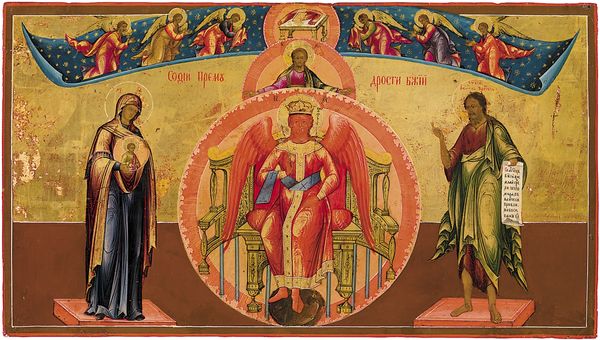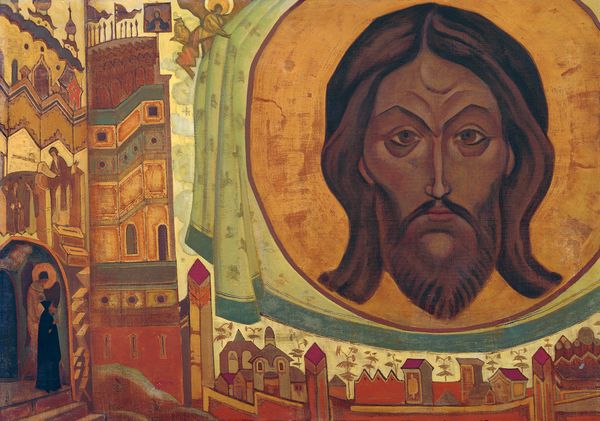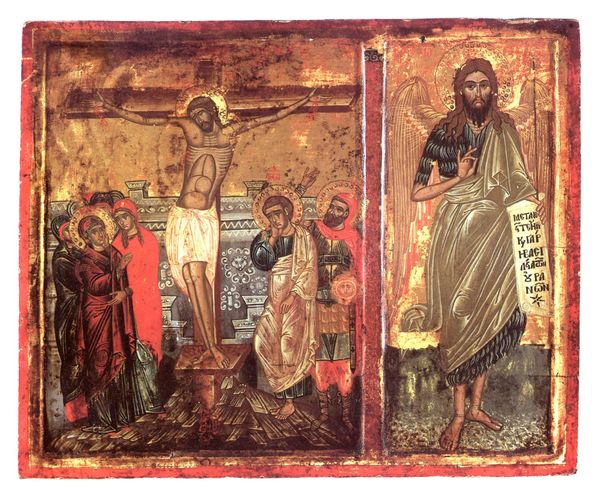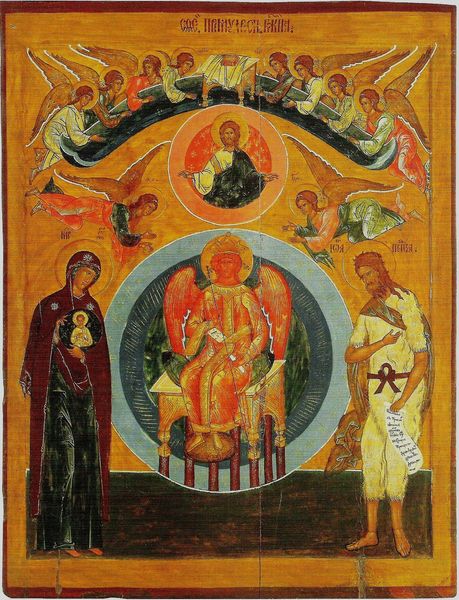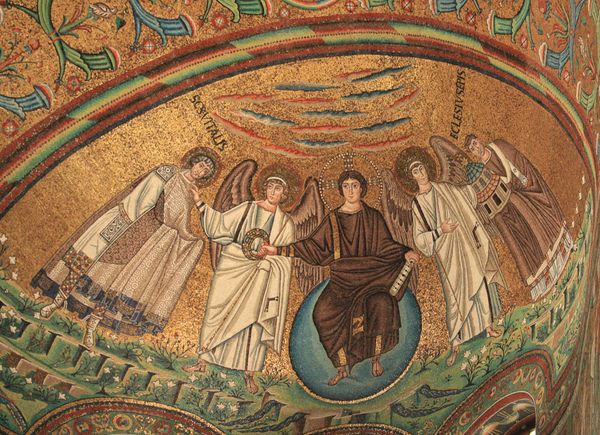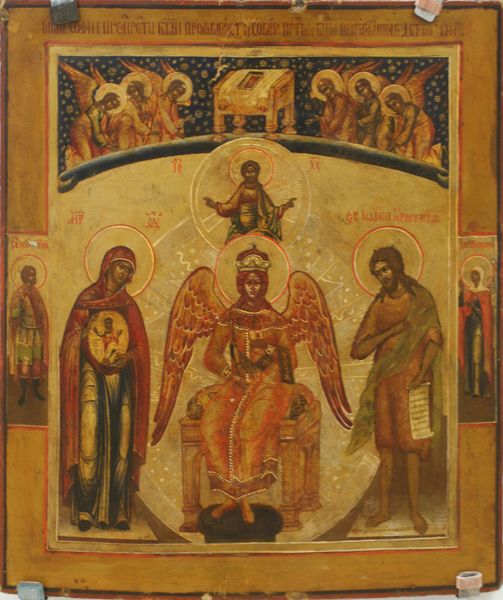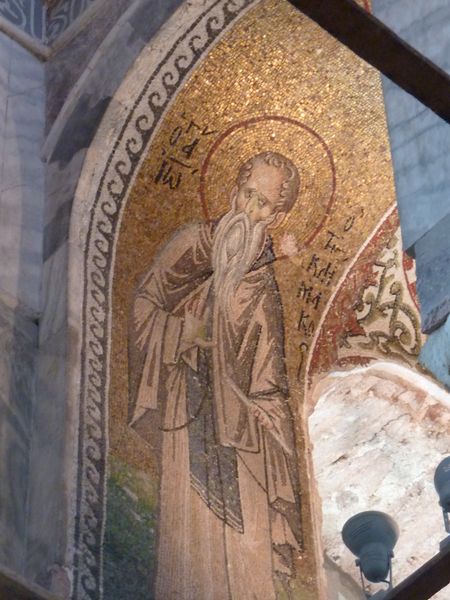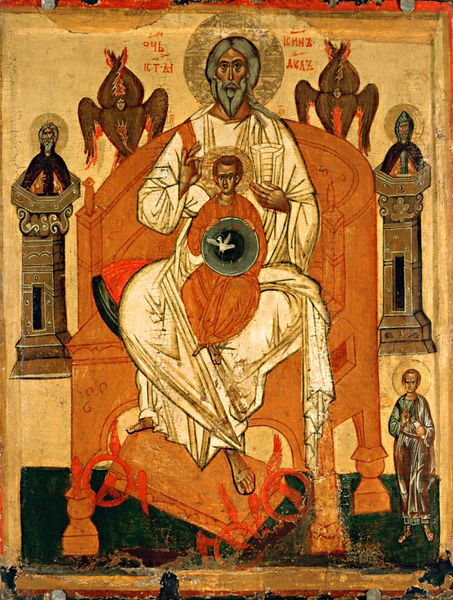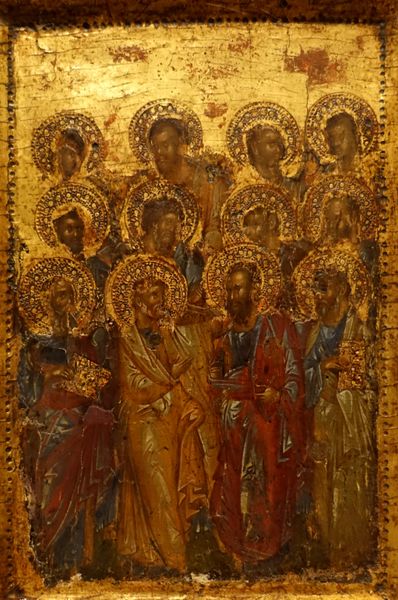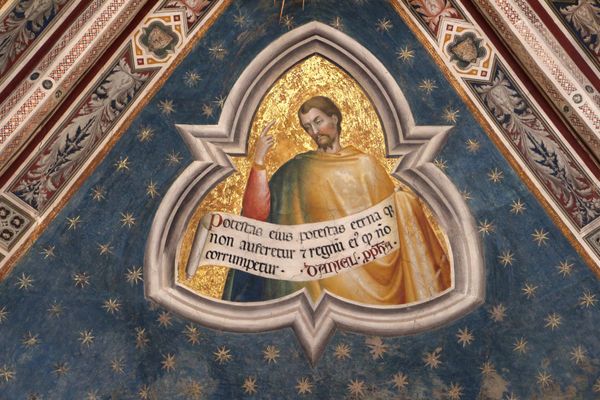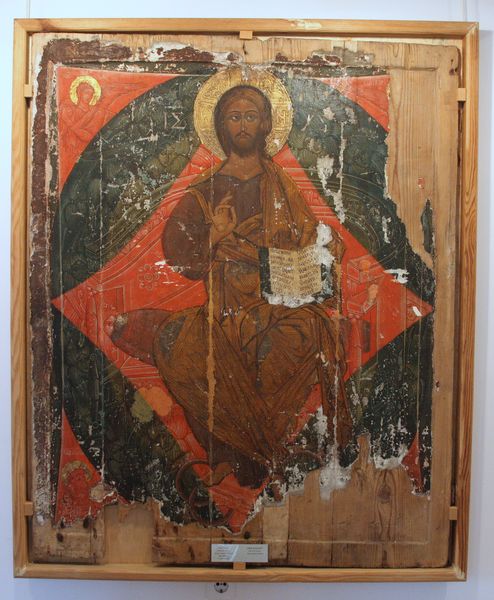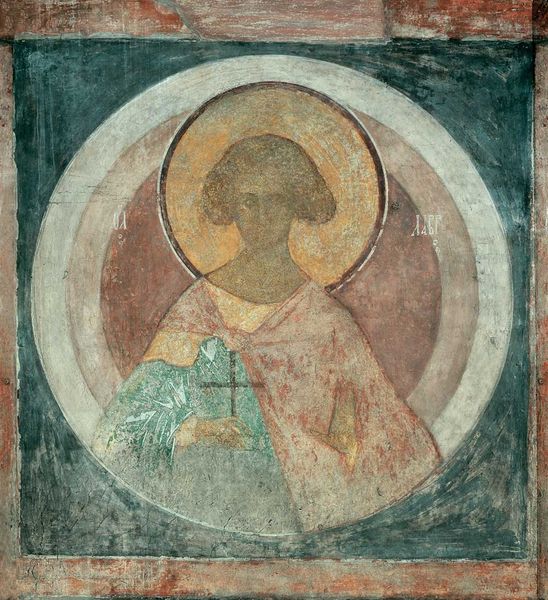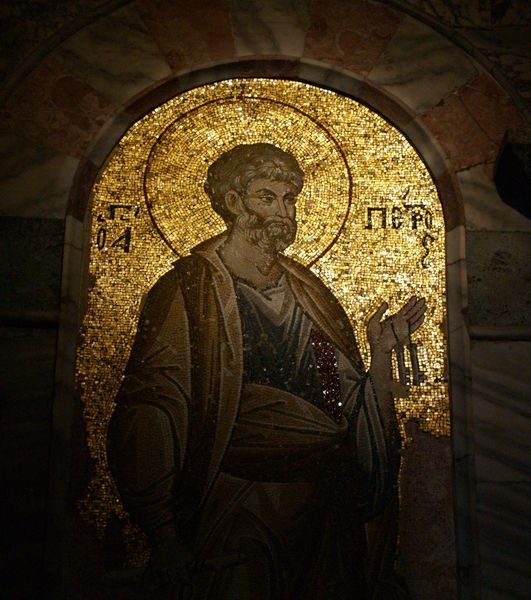
tempera, painting, mural
#
byzantine-art
#
water colours
#
tempera
#
painting
#
figuration
#
mural
Copyright: Jerzy Nowosielski,Fair Use
Curator: There's an undeniable stillness radiating from this mural, this "Transfiguration" by Jerzy Nowosielski. Editor: Yes, there's a reverent quiet here. It reminds me of standing in a small village church, a sort of serene and almost meditative experience. The material, the wooden panels… it grounds the spiritual imagery. Curator: Precisely. Nowosielski was deeply influenced by Byzantine art. He uses tempera here, a very traditional medium, lending a luminous, yet grounded quality to the surface. Think of the ways that public role plays with religious dogma! Editor: I’m really drawn to the way he presents the figure of Christ. Surrounded by those concentric circles of blue, reminiscent of halos or mandorlas, against the warm wood… It’s both ethereal and deeply human. Curator: Indeed. And note the accompanying figures. It’s a traditional depiction, yes, but the application onto wood adds an interesting interplay between sacred subject matter and quotidian space. The painting becomes integrated, approachable. Editor: There's a starkness too. He's almost reduced figures to archetypes which is fascinating. It makes me consider questions of identity and representation and think about those figures that are often overlooked in society or history. Curator: Absolutely. And his figuration really connects with traditional iconographic forms, but within a postwar context. Nowosielski negotiated a space where faith met modern sensibilities. Editor: Thinking about the historical moment is key. Poland, then under Soviet influence... An image like this carried coded significance. A spiritual resistance in the face of imposed secularism. Curator: I see it as Nowosielski deliberately invoking Byzantine aesthetics, linking his art with a broader Eastern European cultural identity. It subtly undermined that uniformity that the state so craved. Editor: Ultimately, a work like this demonstrates how religious iconography, even in seemingly straightforward form, could become deeply intertwined with narratives of resistance and collective identity. It challenges the status quo by creating space to question, and even imagine, alternative narratives. Curator: I'd say, Nowosielski delivers us to an evocative reflection about faith, art, and how each one of them takes shape within their own specific contexts. Editor: Yes, it feels timeless, yet very much rooted in a specific history and place. Thank you.
Comments
No comments
Be the first to comment and join the conversation on the ultimate creative platform.
